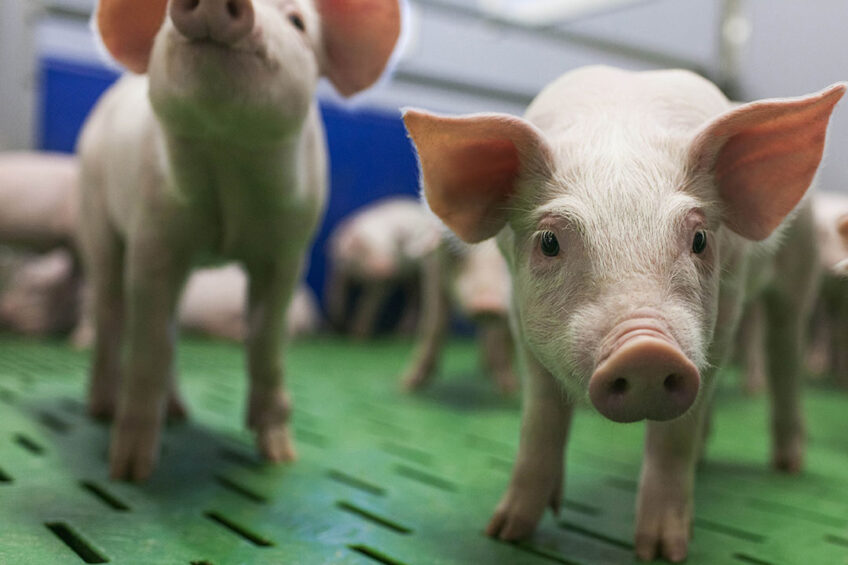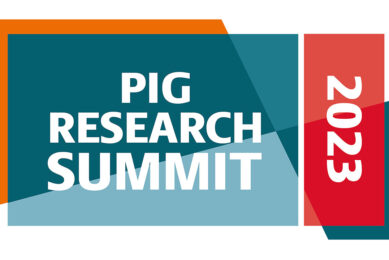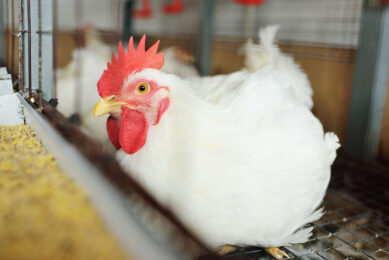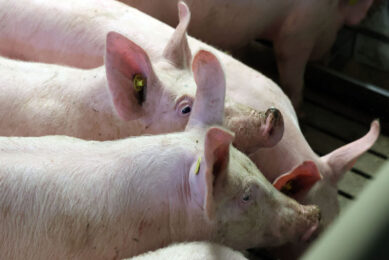Breaking down the barriers to high-performing feed

Antibiotic growth promoters and zinc oxide are going out of fashion in piglet feed. Highly digestible proteins look like the best option for overcoming post-weaning challenges and keeping up performance.
Effective strategies for avoiding weaning stress are becoming increasingly limited for piglet producers around the world. As a growing number of countries phase out the use of antibiotics and zinc oxide, the race is on to find alternative solutions for preventing stress-related diarrhoea and associated mortality and keeping young animals on the path to healthy growth.
Changes in feeding schemes and livestock management are inevitable to overcome the multiple factors that challenge piglet health in the first 2 weeks after weaning, when piglet guts are still immature. From a feed perspective, some trials are exploring opportunities to reduce the crude protein content of piglet feed or use other additives. Others focus on the digestibility of the feed itself – currently the strategy with most potential. The overall objective is to ease the absorption of essential nutrients and minimise the indigestible components, which feed pathogenic bacteria in the gut and are a frequent cause of diarrhoea.
Piglet weaning stress has been a growing challenge for producers since 2006, when the EU banned the use of antibiotic growth promoters (AGP) in piglet feed. Some countries, particularly in southern Europe, then resorted to therapeutic use of antibiotics in feed – at a far higher concentration – to overcome diarrhoea in the piglet barn. However, as time has passed, further legislation has restricted the use of antibiotics generally for diarrhoea prevention.
Since then, zinc oxide has become a standard alternative. But, like antibiotics, extensive use of zinc oxide in feed has been linked to the development of multi-resistant bacteria. Another concern relates to zinc build-up in soil, with negative implications for the environment. This largely explains the EU decision to ban zinc in feed from mid-2022.
Although AGP and zinc are still widely used in many other parts of the world, awareness of the long-term threat to human health and the environment is growing. In the USA, for instance, the pressure to find alternative solutions comes not from lawmakers but from fast food outlets, retailers and consumers, who wish to buy meat from an antibiotic-free source. A high dose of copper sulphate is one possibility for diarrhoea reduction used in the USA and elsewhere, but this, too, is forbidden in the EU.
One important lesson we have learned from AGP is that, if you can prevent young animals from becoming ill, then they will grow faster and better. Experience has shown that post-diarrhoea animals typically weigh less when transferred to the finishing barn. At this stage, a weight difference of just one kilo may result in a 3 kilo reduction in slaughter weight. Today it is well known that there is an increased incidence of diarrhoea in piglets fed a diet high in soybean meal. In some countries, farmers have attempted to reduce this risk simply by cutting down on the protein content of piglet feed. Here, the idea is to limit the level of poorly digestible components that provide substrate for pathogens. The problem with this approach is that piglets may lack sufficient amino acids in their diet, which means their daily weight gain is reduced. With regard to alternatives to AGP and zinc, organic acid is the only additive that comes close to the effect of AGP. Other additives under test include probiotics, essential oils, enzymes and oligosaccharides. In all cases, producers must accept a compromise in feed conversion rate and average daily weight gain.
Figure 1 – Effect on diarrhoea score of piglets. Animals fed HP 300 had significantly lower diarrhoea score compared to the SBM control and were not different from piglets fed AGP containing diets.

That brings us to the strategy with the most potential: the focus on highly digestible proteins. In soy-based piglet feed, this involves ensuring the soy protein has a minimal content of the anti-nutritional factors (ANF) naturally present in soy, which limit nutrient absorption and feed efficiency. At Hamlet Protein, a number of feeding trials have shown that low-ANF soy protein reduces the risk of diarrhoea and benefits daily weight gain. Good results have also been obtained when comparing low-ANF soy protein with fishmeal, another high-quality protein source. Here, the high content of non-protein nitrogen in fishmeal limits its inclusion in feed.
At China Agricultural University, a feeding trial compared the performance of piglets fed a diet based on soybean meal (SBM) or HP 300, a low-ANF soy protein source. Both diets were tested with and without AGP. The trial found that piglets on the SBM diet with no AGP addition had significantly more diarrhoea and the lowest performance compared to the other groups (Figure 1). While the group fed low-ANF soy protein plus AGP performed best of all, piglets fed the low-ANF diet without AGP performed the same or better than those fed the SBM plus AGP diet (Figure 2). The diarrhoea score was similar whether AGP was added or not.
Figure 2 – Effect on average daily gain of piglets. Animals fed HP 300 had similar weight gain as piglets fed the antibiotic supplemented control SBM diet.

Trial results like these give good reason to be optimistic about the future for piglet feed beyond AGP, zinc and the addition of other additives. But it will require in-depth knowledge of animal nutrition to secure the best performance without complicating the formulation. This is where feed producers and farmers can truly benefit from putting their trust in the nutritionist skills of their protein suppliers. With the right feed formulation plus good livestock management, most challenges can be overcome.
References are available on request
Author:
Lars Sangill Andersen, Nutritionist at Hamlet Protein






